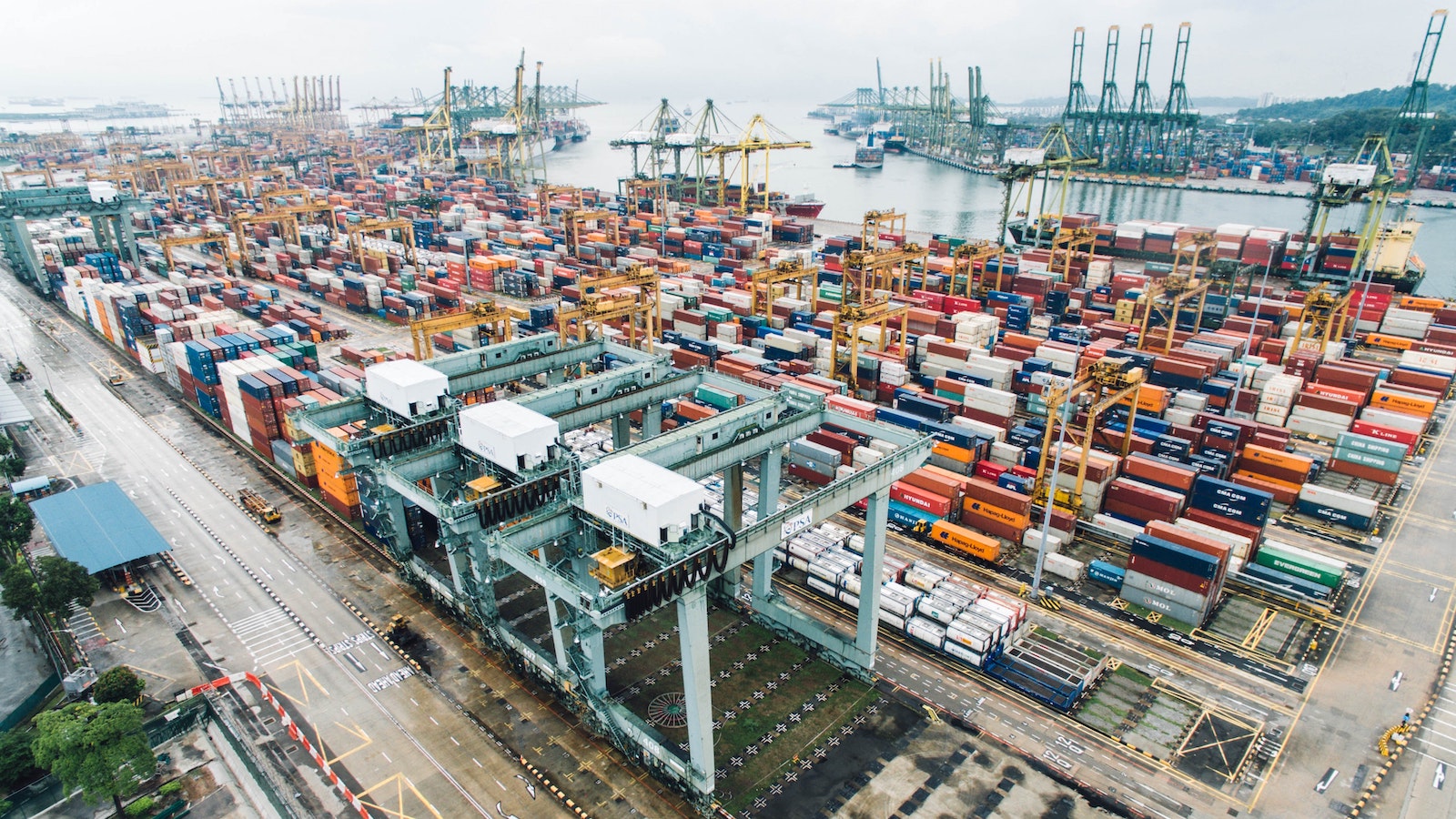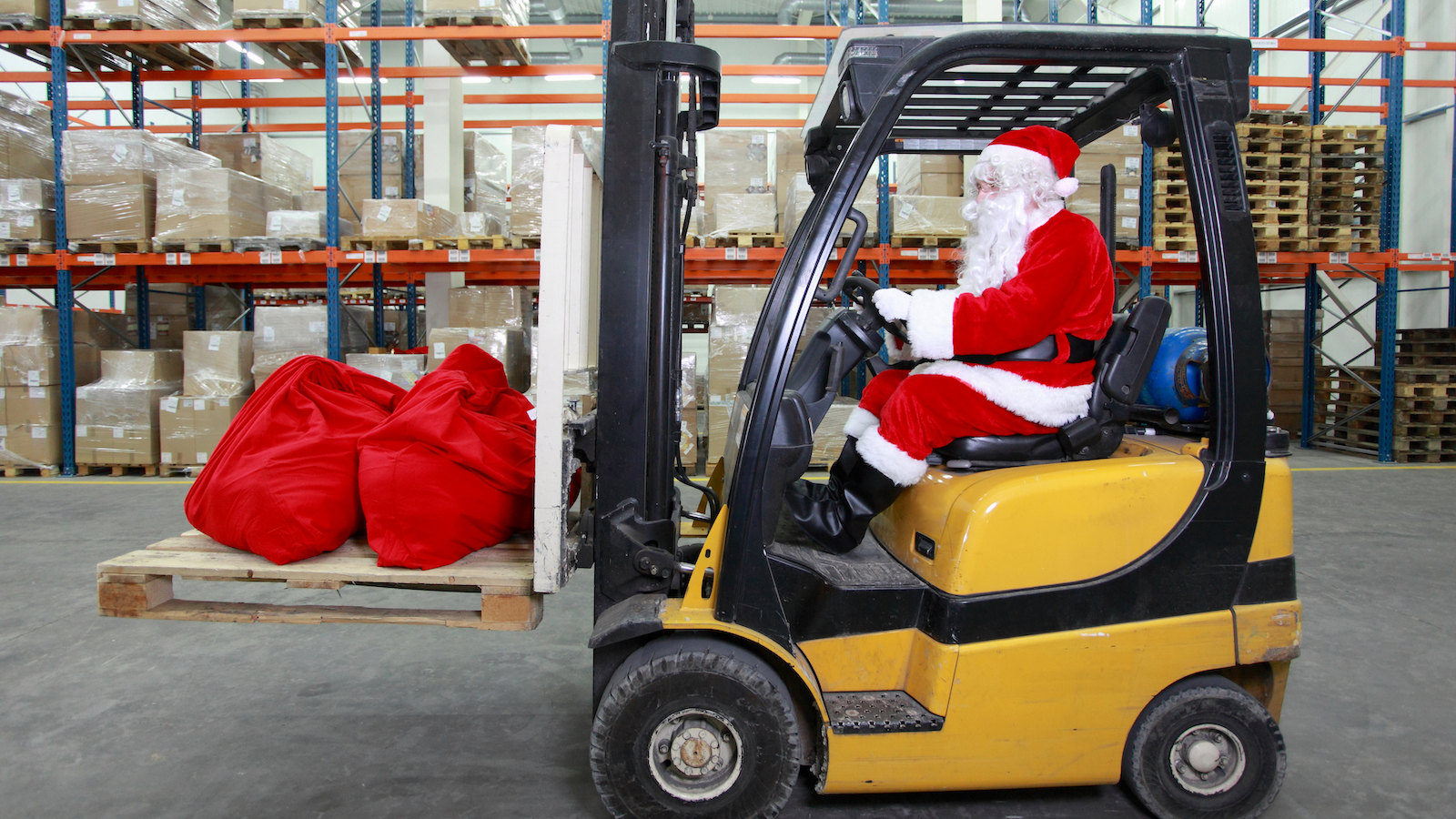Table of Contents
** Minutes
What are procurement logistics?
Why procurement is often overlooked in logistics
What happens when procurement logistics are separate from the rest of your logistics management?
Gaining a competitive advantage by viewing procurement with your logistics management
How ShipBob enables brands to build more efficient supply chains
In ecommerce, optimising for fast fulfilment and shipping is a major focus.
After all, this stage of the supply chain directly impacts a brand’s ability to stay competitive and meet customer expectations.
But what about the sourcing of ecommerce inventory? Could there be opportunity to build a more sustainable supply chain by identifying areas of improvement in the procurement process?
Procurement logistics play a key role in the ecommerce supply chain, but there’s often a stronger emphasis placed on what happens after procurement, starting with receiving inventory and optimising the supply chain from there.
But there are ways to improve the procurement process to save on costs, speed up supply chain velocity, and ultimately maintain customer satisfaction.
Read on to learn the importance of procurement logistics, and how you can improve this stage of the supply chain to set your entire operations up for success.
What are procurement logistics?
Procurement logistics refers to the process of sourcing inventory needed to meet demand.
This could include raw materials needed to manufacture custom products or to sell to another business (also called production inventory), or finished goods that are ready to sell directly to the end consumer.
Once goods are sourced and received, they are then considered inventory, which involves the process of storing, managing SKUs, preparing items for retail fulfilment, and ordering more to replenish inventory.
Why procurement is often overlooked in logistics
For direct-to-consumer (DTC) brands that are first starting out, procurement is often treated as a separate function from the rest of the supply chain.
Often times, business owners make the assumption that the supply chain starts after goods are sourced and received, and instead the focus is on getting the finished goods from the warehouse to the end user.
But forgetting to factor in potential changes in the procurement phase (e.g., production lead times or pricing of raw materials) into their inventory planning process can cause unexpected delays and disruptions later on in the supply chain.
What happens when procurement logistics are separate from the rest of your logistics management?
There are several challenges that can arise when procurement logistics is viewed separately from the rest of your supply chain logistics. Here is an overview.
Siloed systems reduce efficiency
When different areas of your supply chain are kept siloed, you waste more resources, risk higher costs, and reduce supply chain efficiency.
For example, when procurement functions separately from the rest of your supply chain logistics systems, you may have trouble procuring goods fast enough to meet demand and fulfil orders as soon as they come in. This can cause stockouts and backorders, which can lead to lost sales and lower customer satisfaction.
Or you may end up procuring more inventory than the anticipated demand, which can lead to what’s known as “dead stock” due to items going obsolete, expired, or out of season.
Limited supply chain visibility leads to missed opportunities
Keeping procurement logistics separate from the rest of your supply chain management process reduces visibility into your supply chain as a whole, which can result in missed opportunities to optimise.
When you don’t have visibility and oversight of the procurement process, it can be a challenge to create a resilient supply chain since the procurement stage is disconnected from the rest of your operations.
For example, not understanding production lead times can impact your ability to reorder inventory on time based on demand, as well as how long it will take to purchase inventory and receive your order from your manufacturer.
What if there is a delay in the manufacturing process? How will you and your team respond to the delay and keep the supply chain running? Thinking through roadblocks that can occur during the procurement phase can help your team prepare for the unexpected.
Gaining a competitive advantage by viewing procurement with your logistics management
Keeping track of changes in the procurement process is vital for your business. This can include anything from changes in raw material pricing that can impact wholesales prices to slower manufacturing lead times.
After all, inventory is the core of your business. If you don’t have systems in place to optimise inventory (having enough inventory at the right time and in the right place), you risk higher logistics costs, lower customer satisfaction, and fewer sales and/or returning customers.
The supply chain creates a domino effect as every stage impacts the next. If there are delays in procurement and receiving inventory, it can slow down the order fulfilment process. It can also impact your pricing strategy. For instance, what if your current supplier changes their wholesale prices due to a shortage of raw materials?
Having insight into what’s going on during the procurement process can help you find ways to build a more agile supply chain. For instance, instead of viewing procurement as a separate part of your supply chain logistics, think of it as the first (and the most critical) stage of logistics management.
You might decide that it’s more cost-effective to source inventory from multiple suppliers while also reducing risk in case of a manufacturing delay or shutdown. But you won’t know how to improve the procurement phase until you think about how it impacts the rest of your supply chain.
If there is a delay in the procurement process or the cost to manufacture products increases, having visibility into the procurement stage will allow you and your team to be proactive, so you can keep your supply chain running.
Tips for improving your procurement logistics by merging them with the rest of your logistical functions
Now that you understand how important the procurement process is, let’s look at ways you can connect your procurement logistics with the rest of your supply chain operations.
Factor in forecasted demand to procurement planning
Procurement logistics plays a role in your ability to use demand forecasting as a tool to optimise inventory levels and consistently meet demand.
Demand forecasting uses historical data and predictive analysis to estimate future demand for your products. You can use this information to plan which items at the SKU level you need to reorder, and how much you need and when.
Working closely with your manufacturer or supplier on expected order volumes can minimise the risk of not receiving enough inventory on time to meet demand.
For instance, if you’re prepping your store for peak season, then it’s important to share with your manufacturer or supplier your predicted Q4 order volume as soon as possible.
Calculate procurement lead times and incorporate them into reorder points
Understanding and calculating estimated lead times can help improve your inventory replenishment process and reduce the risk of stockouts or overstocking.
If you use an inventory management software or partner with a 3PL like ShipBob, you most likely have the ability to set automatic reorder points. But in order to calculate a reorder point, you will need both forecasting data and estimated lead times.
Lead time is the number of days between when you place a purchase order with your manufacturer or supplier for a product and when you receive the product to the point it is ready for fulfilment. Keep in mind that your lead time will be longer if your supplier is overseas as compared to a domestic or in-house production facility.
Once you have an understanding of production lead times, you can then calculate demand during lead time by multiplying the lead time (in days) by the average number of units sold daily:
Lead time demand = lead time x average daily sales
Optimise procurement logistics the same way you view the rest of your logistics
To truly merge your procurement logistics with the rest of your logistics operations, you need to optimise it the same way as you would any other process in your supply chain.
For example, sourcing locally can make your overall supply chain logistics more efficient. And it also optimises your procurement logistics as it takes less time and costs less to ship goods to your warehouse.
If you use multiple shipping couriers to optimise last-mile delivery, you might want to consider the same approach when it comes to procurement. By diversifying your supplier network, you can significantly reduce risk in case of major delays or disruptions that occur on the supplier end.
Track raw materials while in-transit
Depending on the type of ecommerce business, you might also need to track raw materials if you manufacture or design custom products or sell raw materials to another business.
In this case, you would track raw materials in transit the same way you would as products that are ready to sell to the end user. This will give you a more accurate idea of production lead times and anticipate how long it might take to complete procurement.
You can then use these insights to get a better estimate on how long it takes to procure custom products.
Store raw materials on hand efficiently
If you sell custom products, raw materials are considered work in process (WIP) inventory and should be included on your balance sheet as an additional asset for inventory accounting purposes.
With that said, once you receive raw materials from your supplier, be sure to store it the same way you would with finished goods inventory. This will ensure you know how much raw materials vs. finished goods you have on hand and where each is located in the warehouse.
“We launched a “waste not, want not” product in our efforts against food waste. It is inventory that is completely safe to consume but doesn’t look as visually pleasing because it looks vacuum packed (which could be jarring for first-time customers).
People can opt in, knowing it’s an imperfect-looking product in exchange for a discount. Rather than waste products that look less-than-ideal during the manufacturing process, we have a more sustainable solution without compromising the customer experience.
ShipBob completes a spot check for us to identify and locate such products and store them in a separate bin, so we can treat it as a separate SKU when shipping out those orders. That also saves me the time in having to deal with the return of those products to me.”
Leonie Lynch, Founder & CEO of Juspy
Track raw materials in your inventory management system
If raw materials play a role in how you produce and deliver goods, you will want to keep track of your raw materials in your inventory management systemthe same way you track products that are ready to sell.
This will help you gain a holistic overview of all inventory levels in one place, so you known when you’re running low of certain materials and quickly stock up, so there’s no delay in the production process.
“We utilise ShipBob’s Inventory API, which allows us to programmatically retrieve real-time data on how many units of each product are currently stored at ShipBob’s warehouses. We currently use this API to generate custom reports to tie this inventory data into our accounting platforms.”
Implement receiving best practices into procurement
The typical warehouse receiving process starts with having proper documentation before receiving the materials. And once you receive the materials, you’ll need to count, confirm, store, and file them.
For instance, ShipBob requires merchants to fill out a Warehouse Receiving Order (WRO) label and attach it to each shipment with the barcode visible.
This makes it easy to scan the shipment using a warehouse management system (WMS) to pull up data on the order and make sure the receiving inventory is accurate and stored in the right place.
Optimising the receiving process will help to improve accuracy and reduce inventory shrinkage.
How ShipBob enables brands to build more efficient supply chains
ShipBob is a best-in-class 3PL that offers premium technology and an international fulfilment network.
We help fast-growing online brands improve their supply chain by offering a well-connected logistics network that enables visibility and transparency throughout the entire supply chain.
“We are very impressed by ShipBob’s transparency, simplicity, and intuitive dashboard. ShipBob’s front-end software was the primary decision-making factor for me in choosing them over other fulfilment solutions.
Their software is so simple and intuitive, especially as so many 3PLs have either bad or no front-facing software, making it impossible to enter orders, keep track of what’s leaving or entering the warehouse. It’s fun to see orders shipping out instantaneously. I love how fast and efficient ShipBob is.
Their shipping costs are very reasonable, and their platform makes fulfilment feel so easy.”
Harley Abrams, Operations Manager of SuperSpeed Golf, LLC
ShipBob then optimises your fulfilment logistics using automation and technology that connects our expansive network of fulfilment centres. This allows you to track inventory in real time, filter orders by status, forecast demand, and manage SKUs, as well as get insights into fulfilment and shipping performance all from one dashboard.
To learn more about how ShipBob can help you optimise your supply chain, read this review to learn more about ShipBob’s logistics capabilities or click the button below to start the conversation.
Procurement and logistics FAQs
Here are the answers to some of the top questions on procurement and logistics.
How does procurement fit into the supply chain?
The ecommerce supply chain begins starting with procurement logistics. The procurement stage impacts the rest of the supply chain as it involves the sourcing and receiving of raw materials and finished goods as inventory. Without having insight into the procurement phase, it can be hard to understand when it’s time to place an order and receive inventory on time to meet demand.
Is procurement part of logistics?
Yes. When online brands first start out, there is often a strong focus on the stages that come after procurement, starting with receiving the inventory. But there are a lot of ways to optimise and improve the procurement phases to minimise risk, lower logistics costs, and meet customer demand.
How do procurement and logistics work together?
For logistics to work, the procurement process also has to flow seamlessly. For instance, if an online brands orders more inventory only to find out that there is shortage of raw materials, a delay in manufacturing, or a manufacturing shutdown, it can cause major disruptions in the fulfilment logistics stage.



